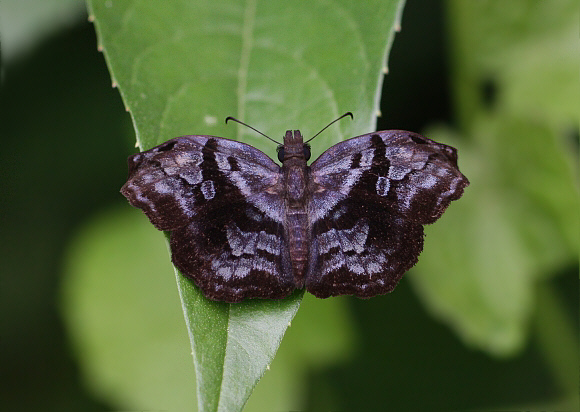
Introduction
The Pyrginae, popularly known as Flats or Spreadwings, are a cosmopolitan subfamily distributed across temperate and tropical habitats throughout the world. In the Americas there are 990 species.
The three genera Cycloglypha, Camptopleura and Helias are collectively known as ‘bent-skippers’ because of the way the butterflies rest and bask with the forewings bent so that the apex is folded down. Another characteristic they all have in common is the metallic sheen on the wings.
The genus Helias comprises of 3 known species, all very similar in appearance, and confined to the neotropical region. They are small butterflies averaging about 4 cms in wingspan.
Helias phalaenoides is a common species distributed from Panama to Peru and across the southern Amazonia region of Brazil.
Habitats
This is a forest edge species, found along roadsides, riverbanks and wide forest trails at altitudes between sea level and about 1000 metres.
Lifecycle
In common with other Pyrgine butterflies Helias lay their eggs singly. I have no data regarding the early stages, but the larvae of Pyrgines are generally dull green or brownish, with thin longitudinal lines along the back and sides, and with black shiny heads. They feed typically on low growing herbaceous plants, but a small percentage feed on the leaves of trees or bushes. The pupae are usually dark and smooth, with the wing cases in a contrasting tone or colour. They are formed within silken tents constructed by spinning together the leaves of the foodplant.
Adult behaviour
Males of phalaenoides occasionally visit sandbanks and roadsides to imbibe mineralised moisture, and are also attracted to the ashes of camp-fire sites. They are commonly observed ‘perching’ or basking on the foliage of bushes or herbaceous plants, with wings outspread, and with the apex of each forewing folded down. They have a rapid flight, zig-zagging and flying about in tight circles, and often go on short sorties before returning to their original perching places, suggesting that they may be territorial, and using the perches as lookouts from which they survey passing females.

